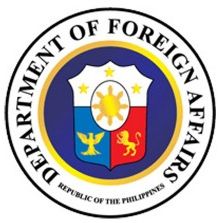The Philippines on Wednesday denounced China’s decision to strengthen islands at the center of territorial disputes in the West Philippine Sea (South China Sea) as a violation of international law.
“Sansha City has been a subject of a Philippine protest as its administrative jurisdiction encompasses Philippine territory and maritime zones in the West Philippine Sea,” the Department of Foreign Affairs (DFA) said, referring to China’s announcement that it would develop Woody Island in the Paracels and other islands in the sea that the Philippines and other Southeast Asian countries are disputing.
“China’s action to fortify Sansha City is an attempt to reinforce its excessive nine-dash claim, which is a violation of international law, especially the United Nations Convention on the Law of the Sea,” said DFA spokesman Raul Hernandez.
Hernandez said the Philippines would press ahead with its political, legal and diplomatic plans to resolve its dispute with China over Panatag Shoal (Scarborough Shoal) and seven islands in the Spratlys in the West Philippine Sea.
Besides the Philippines, Brunei, Malaysia and Vietnam claim parts of the sea that is home to sea-lanes vital to global trade and vast deposits of oil and gas.
Taiwan also claims parts of the sea, nearly all of which China insists is part of its territory.
$1.6-billion investment
In a report on Monday, business and financial news agency Bloomberg quoted the 21st Century Business Herald as saying that China had approved plans to invest at least $1.6 billion to build an airport, pier and other infrastructure on islands involved in territorial disputes with its Southeast Asian neighbors.
The report quoted Jiang Dingzhi, governor of China’s Hainan province, as saying that the plans were intended as “a platform for Sansha’s development in the long term.”
“Sansha’s immediate work is for airports, ports, piers and other important infrastructure, as well as law enforcement vessels, supply ships and other projects to be established,” Jiang was quoted as saying in a statement.
“In the long term, we need to implement a platform for Sansha’s development,” Jiang added.
Garrison town
Sansha is a garrison town on Woody Island, one of the islands, reefs and atolls that Vietnam is claiming in the Paracel archipelago in its part of the area that it calls East Sea.
Bloomberg, still quoting the 21st Century Herald, said the funds for Sansha would also be spent on marine law enforcement and ocean fisheries and that construction of some facilities had already started.
The Philippines and Vietnam have protested China’s creation of Sansha.
China built Sansha in June for the administration of the Paracels and the Spratlys.
The DFA said Sansha’s jurisdiction covered the Kalayaan Island Group in the Spratlys, which “is an integral part of the Philippine territory falling under the municipality of Kalayaan in Palawan province.”
“For this reason, the Philippines does not recognize Sansha City and the extent of its jurisdiction and considers recent measures taken by China as unacceptable,” Hernandez said.
New border rules
In late November, Hainan province announced new maritime rules that would allow its border patrols to board, search and expel foreign ships that enter what it considers its territory in the sea.
The new rules, believed to have approval from Beijing, would come into effect on Jan. 1.
China also issued a new passport on which is stamped a map showing the entire sea as part of its territory.
The Philippines and Vietnam have protested the new maritime rules and the map on the new Chinese passport and refused to stamp visas on it.
Other members of the Association of Southeast Asian Nations have expressed fears the new Chinese maritime rules could lead to armed confrontations in disputed parts of the sea.
The United States, which has declared it has a “national interest” in freedom of navigation in the sea, has asked China to clarify the extent and purpose of the new border rules.
Originally posted at 4:17 pm | Wednesday, December 26, 2012


